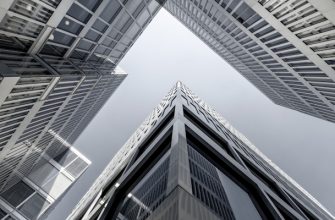- Understanding Real World Assets: Definition and Importance
- The Evolution of RWA in the Financial Landscape
- Types of Real World Assets: From Real Estate to Commodities
- The Role of Blockchain in Tokenizing Real World Assets
- Benefits and Challenges of Investing in RWA
- Future Trends: The Growth of Real World Assets in Digital Finance
Understanding Real World Assets: Definition and Importance
Real World Assets (RWAs) refer to tangible and intangible assets that exist in the physical world and hold intrinsic value. These assets can include real estate, commodities, intellectual property, and more. Understanding RWAs is crucial as they serve as a bridge between traditional finance and the emerging digital asset landscape, particularly in the context of blockchain and cryptocurrencies.
The importance of RWAs lies in their ability to provide stability and security within the volatile realm of digital currencies. By tokenizing real-world assets, investors can gain access to a broader range of investment opportunities while mitigating risks associated with purely digital assets. This tokenization process transforms physical assets into digital tokens on a blockchain, enhancing liquidity and enabling fractional ownership.
- Enhanced Liquidity: RWAs can be traded more easily through tokenization, allowing for quicker transactions and access to funds.
- Fractional Ownership: Tokenization enables multiple investors to own a portion of high-value assets, lowering the entry barriers for investment.
- Increased Transparency: Blockchain technology provides a secure and transparent record of ownership and transaction history for RWAs.
- Diversification: Investing in RWAs allows for a more diversified portfolio, which can help reduce overall investment risk.
As the financial landscape evolves, the significance of Real World Assets continues to grow. By integrating RWAs into investment strategies, individuals and institutions can better navigate market fluctuations and capitalize on new opportunities. The seamless blend of real-world value with digital innovation not only enhances accessibility but also reinforces the stability of the financial ecosystem.
The Evolution of RWA in the Financial Landscape
The evolution of Real World Assets (RWA) has significantly transformed the financial landscape, marking a shift in how tangible and intangible assets are perceived and utilized in the digital economy. Initially, RWAs were primarily associated with physical assets, such as real estate and commodities, which provided stability and security in investments. However, with the advent of blockchain technology, the scope of RWA has expanded dramatically.
Blockchain technology introduced a new level of transparency and security, enabling the tokenization of physical assets. This process allows RWAs to be represented digitally, facilitating easier transferability and access. As a result, investors can now engage with RWAs through decentralized finance (DeFi) platforms, providing a greater sense of liquidity and inclusivity in the market.
- The integration of RWAs into blockchain ecosystems has led to increased investor confidence.
- Tokenization has made it possible to fractionalize RWAs, allowing smaller investors to participate in markets previously dominated by high-net-worth individuals.
- Innovations in smart contracts have streamlined transactions involving RWAs, reducing costs and time associated with traditional asset management.
- The rise of non-fungible tokens (NFTs) has further expanded the concept of RWAs, creating unique digital representations of various assets.
As the financial landscape continues to evolve, the role of RWAs is becoming increasingly prominent. Traditional financial institutions are beginning to recognize the potential of RWAs, integrating them into their portfolios to enhance diversification and mitigate risks. Furthermore, regulatory frameworks are gradually adapting to accommodate the growth of RWAs, ensuring a safer environment for investors and asset managers alike.
In conclusion, the evolution of Real World Assets within the financial sector is a testament to the ongoing innovation in asset management. With the increasing acceptance of RWAs, the future of finance appears to be more inclusive, efficient, and transparent, paving the way for a new era of investment opportunities.
Types of Real World Assets: From Real Estate to Commodities
Real World Assets (RWA) encompass a broad spectrum of tangible and intangible assets that can be leveraged in various financial markets. Understanding these assets is crucial for investors seeking diversification and stability. The types of real world assets are diverse, ranging from physical properties to agricultural products.
- Real Estate: One of the most common forms of RWA, real estate includes residential, commercial, and industrial properties. Investing in real estate offers potential for capital appreciation and rental income.
- Commodities: This category includes natural resources such as oil, gold, and agricultural products like wheat and corn. Commodities are often used as a hedge against inflation and currency fluctuations.
- Art and Collectibles: Unique items such as paintings, antiques, and rare collectibles can appreciate significantly over time. This type of RWA often appeals to investors looking for alternative investment opportunities.
- Infrastructure: Investments in infrastructure assets like bridges, roads, and utilities are vital for economic growth. These assets often provide steady cash flows and long-term stability.
- Intellectual Property: Patents, trademarks, and copyrights are intangible assets that can generate significant revenue streams through licensing and royalties.
Investors must consider the characteristics and risks associated with each type of RWA. Diversifying across various categories can mitigate risks and enhance the potential for returns. Real world assets not only contribute to a balanced portfolio but also provide a hedge against market volatility.
The Role of Blockchain in Tokenizing Real World Assets
Blockchain technology plays a crucial role in the tokenization of real-world assets (RWA), enabling a more efficient, transparent, and secure method for representing physical assets in a digital format. By leveraging decentralized networks, blockchain ensures that each token accurately reflects the ownership and value of the underlying asset, whether it be real estate, art, commodities, or any other tangible item.
One of the primary advantages of using blockchain for tokenizing real-world assets is the enhanced transparency it provides. Each transaction involving a tokenized asset is recorded on the blockchain, creating an immutable and publicly accessible ledger. This transparency helps to reduce fraud and increase trust among investors and stakeholders.
Moreover, blockchain facilitates fractional ownership of real-world assets, allowing multiple investors to hold shares in a single asset. This democratization of investment opportunities opens the door for a broader audience to participate in markets that were previously inaccessible, such as high-value real estate or fine art.
In addition to fractional ownership, the efficiency of blockchain technology streamlines the processes involved in managing and transferring assets. Smart contracts, which are self-executing contracts with the terms of the agreement directly written into code, automate transactions and reduce the need for intermediaries. This results in lower costs and faster transaction times, making it easier for individuals and businesses to engage in the market for tokenized real-world assets.
- Security: The decentralized nature of blockchain ensures that data is protected against tampering and unauthorized access.
- Accessibility: Tokenization lowers the barriers to entry for investors, enabling more individuals to engage in asset markets.
- Liquidity: Tokenized assets can be traded on secondary markets, increasing liquidity compared to traditional asset classes.
- Global Reach: Blockchain allows for cross-border transactions without the complexities of traditional banking systems.
In conclusion, the integration of blockchain technology in the tokenization of real-world assets is revolutionizing how assets are bought, sold, and managed. This innovative approach not only enhances transparency and security but also democratizes access to investment opportunities, driving the growth of the real-world asset market.
Benefits and Challenges of Investing in RWA
Investing in Real World Assets (RWA) presents a variety of advantages and challenges that potential investors should consider carefully. RWA encompasses tangible assets such as real estate, commodities, and other physical items that can provide a stable investment option. One of the primary benefits of investing in RWA is the potential for consistent returns. Unlike digital assets, RWAs often appreciate over time, providing investors with a reliable income stream through rental yields or capital gains.
- Stability: RWA typically deliver lower volatility compared to stocks and cryptocurrencies, making them an appealing option for risk-averse investors.
- Diversification: Including RWAs in a portfolio can enhance diversification, reducing overall risk by spreading investments across different asset classes.
- Inflation Hedge: RWAs, particularly real estate, often maintain their value or even appreciate during inflationary periods, serving as a hedge against currency devaluation.
- Tangible Value: Owning physical assets can provide a sense of security and intrinsic value that intangible investments lack.
However, there are also noteworthy challenges associated with RWA investments. The initial capital requirement can be significantly higher than that of other asset types, making entry into the market more difficult for some investors. Additionally, managing physical assets often requires ongoing maintenance and oversight, which can lead to additional costs and complexities.
- Liquidity Issues: RWAs are generally less liquid than stocks or bonds, meaning that selling these assets can take time and may not occur at an optimal price.
- Market Risk: The value of RWAs can be influenced by various market factors, such as location for real estate or commodity prices, which may introduce unpredictability.
- Regulatory Challenges: Different jurisdictions have varying regulations concerning RWAs, which can complicate the investment process.
- Management Burden: Owning physical assets often necessitates hands-on management, which can be time-consuming and require expertise.
Ultimately, the decision to invest in Real World Assets should be guided by a thorough understanding of both the potential benefits and the inherent challenges. A balanced approach that considers personal financial goals and risk tolerance can lead to informed investment choices in the RWA space.
Future Trends: The Growth of Real World Assets in Digital Finance
The emergence of Real World Assets (RWA) in the realm of digital finance marks a significant shift in how traditional assets are perceived and utilized. As the digital finance landscape evolves, the integration of RWAs offers enhanced liquidity and accessibility for various asset classes, ranging from real estate to commodities. This convergence of physical and digital assets is paving the way for innovative financial solutions that cater to a broader audience.
One of the key trends in the growth of RWAs is the increasing adoption of blockchain technology. By leveraging decentralized ledgers, RWAs can be tokenized, allowing for fractional ownership and easier transferability. This technological advancement not only streamlines transactions but also enhances transparency, thereby building trust among investors and consumers alike.
- Increased liquidity: Tokenization of RWAs allows assets to be traded on various platforms, improving market access.
- Global reach: Digital finance enables RWAs to attract international investors, expanding the pool of potential stakeholders.
- Diverse investment opportunities: RWAs encompass a range of asset types, providing investors with various options to diversify their portfolios.
- Lower entry barriers: By allowing fractional ownership, RWAs democratize access to investment opportunities that were previously limited to high-net-worth individuals.
Moreover, regulatory frameworks are beginning to adapt to the rise of RWAs within digital finance. Governments and regulatory bodies are recognizing the potential benefits of integrating RWAs into the financial system, leading to clearer guidelines that promote innovation while ensuring investor protection. This regulatory clarity is expected to drive further investment in RWAs, as businesses and individuals feel more secure in their transactions.
As the market matures, the role of RWAs in digital finance will undoubtedly expand. With an increasing number of platforms dedicated to facilitating the trade and management of RWAs, the future looks promising. The combination of technological advancement, regulatory support, and growing investor interest positions RWAs as a cornerstone of the digital finance ecosystem. This evolution not only enhances the potential for returns but also fosters a more inclusive financial landscape.






